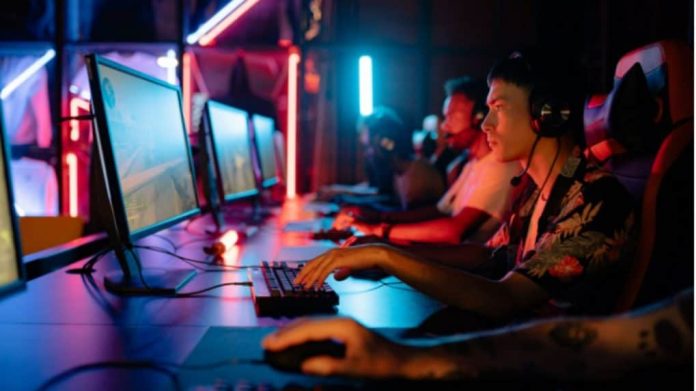The recently enacted Promotion and Regulation of Online Gaming law has not only disrupted India’s real-money gaming sector but also thrown the country’s fledgling esports industry into confusion and uncertainty. Stakeholders argue that while the government’s recognition of esports is welcome, the lack of clarity in definitions, heavy compliance burdens, and high taxation threaten to stifle a sunrise sector that is yet to realize its full potential.
Industry leaders are questioning why the government is attempting to regulate esports at a stage when the ecosystem is still developing. They point to global trends, particularly in countries like Saudi Arabia, where esports is being nurtured with large-scale investments instead of restrictive frameworks. Saudi Arabia’s gaming market, projected to touch $1.7 billion by 2029, is being positioned as a global hub under its Vision 2030 goals.
Held from 8 July to 24 August 2025 at Boulevard City, Riyadh, the tournament featured 26 events across 25 esports titles, with over 2,000 players representing 200+ clubs from 100+ countries. A historic $70–71.5 million prize pool, the largest in esports history: $27 million was allocated to the Club Championship, $38 million to game-specific tournaments, $5 million to qualifiers, and $450,000 for MVP awards.
The Opening Ceremony—headlined by Post Malone, plus performances by DINO (from SEVENTEEN), Duckwrth, Telle Smith, and Alesso—had set a thrilling tone.
In contrast, Indian esports organizers fear the law’s vague definitions may blur the lines between competitive gaming and gambling. Akshat Rathee, Co-founder and Managing Director of NODWIN Gaming said, “The government’s intent to recognize and promote esports, as highlighted in the recent bill, is an encouraging step towards building a structured and globally competitive ecosystem. However, for this vision to truly materialize, it is critical that the terminology used in the bill, particularly the distinctions between esports, online gaming, online social gaming, and online money gaming be clearly defined and uniformly understood.”
Rathee said, “The absence of precise definitions has often led to ambiguity and conflation around the term “esports”. Such overlaps can create confusion not just for regulators, but also for players, teams, investors, and organizers who are working hard to build this industry.”
Rathee further said, “Clear and consistent definitions will create a strong regulatory foundation that ensures investor confidence, long-term stability, and sustainable growth. It will allow every stakeholder from athletes and teams to platforms and video game publishers to operate with clarity and confidence, knowing the industry’s guardrails are well established. This alignment between government intent and regulatory clarity will ensure that India doesn’t just participate in the global esports movement, but establishes itself as one of its leading powerhouses.”
While some stakeholders welcomed the separation of esports from real-money gaming, they also flagged the bill’s heavy-handedness. An executive from the industry noted that the law introduces “a license raj” that risks controlling which games can be published. “By doing so, the government could stifle innovation and creativity, particularly among smaller video gaming firms,” the executive said.
Beyond definitions, taxation remains a key sore point. Manoj Kasyap, Founder of Velocity Gaming, argued that esports professionals are being unfairly treated. “Esports professionals are taxed like gambling businesses—over 30% of their esports winnings. That’s unfair. Recognizing esports under sports would not only offer financial relief but also encourage more grassroots events. More importantly, multiple game titles include lootboxes or crate openings.. is government trying to ban those as well?,” he said. Kasyap added that the government should focus on developing infrastructure, not restricting growth.
Valve’s Counter Strike 2 title allows crate openings in which an user can infuse real money to open crate boxes which upon opening gives cosmetics like player, knife and weapon skins. These crate openings are completely luck or chance based.
The pressure on India’s esports ecosystem is already evident. Once-bustling tournament organizers have either shut shop or significantly scaled down operations due to a lack of sponsorships. Organizations such as Enigma Gaming and 7Sea Esports have exited, while several Valorant rosters have been dismantled owing to unsustainable costs.
A report by AWS and Lumikai highlights the sector’s promise, projecting that India’s esports market will grow from $40 million in 2022 to $140 million by 2027, with the player base expanding from 600,000 in 2022 to an estimated 1.5 million by 2027. Yet, the slowdown is evident, with fewer tournaments, reduced prize pools, and shrinking brand investment.
Rushindra Sinha, Co-founder of Global Esports, acknowledged that the bill takes a positive step by firmly separating esports from real-money gaming. But he warned that “a lot of unanswered questions remain. What the definitions will look like, who will advise the process, and how the next steps will be decided—all of this is still unclear.”
Industry leaders insist that without clarity and relief, the government risks curbing an industry that could place India on the global esports map. As Rathee summed up, aligning intent with regulatory clarity will ensure “India doesn’t just participate in the global esports movement, but establishes itself as one of its leading powerhouses.”
For now, India’s esports sector is seeking what it considers three urgent needs: clear definitions, lower taxes, and a lighter regulatory touch. Without these, the industry fears that instead of accelerating growth, the new law may slow down one of the country’s most promising sunrise sectors.
